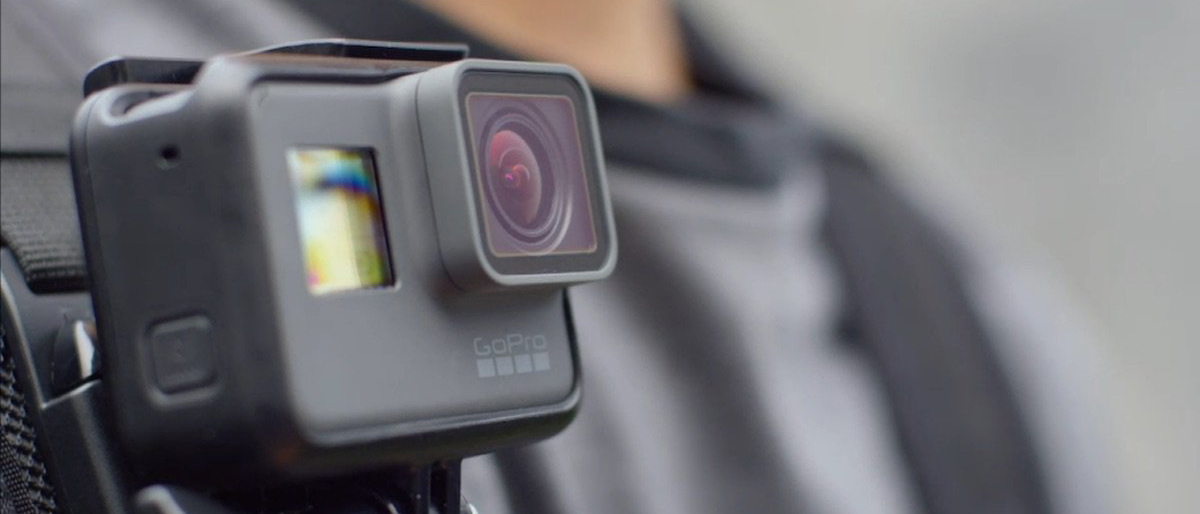Why you can trust TechRadar
Performance
- Capture app offers tethered shooting
- Voice controls work well
- Touchscreen annoying to use when wet
We tested the new GoPro Hero5 Black in a variety of situations, from the sunny climes of Mallorca to the slightly dismal and drizzly surroundings of southern England in winter.
In short, the new camera is extremely simple to set up and use. A new Capture smartphone app means it's easier than ever to tether the camera via its inbuilt Wi-Fi in order to adjust settings, review clips and download files to a mobile device.
That said, the rear touchscreen ensures that a smartphone isn't really required, as it's now possible to set up the perfect shot, with the correct settings, straight off the bat.

Simply swipe to access camera settings or change the frame rate and so on, swipe again to review footage, and swipe some more to access ProTune settings and tinker further.
However, the touchscreen requires a definite swipe to get things going, and trying to achieve this can become frustrating when the unit is wet, with much prodding and poking required.
Helpfully, GoPro has added voice control, should accessing the touchscreen or smartphone app be impractical. Users can bark "GoPro start recording", or "GoPro take a photo" in order to carry out those functions, and it works well in the majority of situations.
There's also a small screen at the front which displays the mode (video, photo, burst, etc), the battery level and memory levels of the SD card.
Image quality
- ProTune offers advanced control
- New Linear mode provides less barrel distortion
- RAW and WDR photos, with GPS tagged locations
As with any GoPro it requires some photographic knowledge to get the most from the Hero5's footage, with advanced users able to fine-tune exposure with a new Exposure Control setting, as well as adjusting ISO, sharpness and EV comp through the ProTune settings.
There's a bunch of resolutions and frame rates to tinker with, with the Hero5 Black able to shoot in 4K resolution at 30fps and a whole host of other combinations.
The sheer weight of options can be baffling for those new to the action camera game, but it doesn't take much trial and error to get things right.
Generally, sticking with the most common 1080p/30fps is a reliable way to capture great footage, while we also found that leaving the camera to determine the best settings produced solid results.
The built-in spot metering also did a good job of rapidly adjusting exposure settings, while bumping up the ISO in lower-light conditions doesn't cause too much noise.
Better still, the addition of Electronic Image Stabilisation is a huge boost for this camera, as it creates much smoother footage without making the viewer feel ill, as can be the case with the typical motion sickness effect of some rivals.
Unfortunately, EIS does drain the battery, as does leaving the Wi-Fi and built-in GPS functionality switched on.
Editing and apps
- Quik and Splice apps
- Quik is quick and easy to use
- Splice gives more control
GoPro knows that capturing the footage is the easy bit; editing and uploading it is where things get tricky.
As a result the firm has revised its Capture app, which makes it easier to pair the camera to a smartphone over Wi-Fi and review footage. The pairing process is still a bit of a faff, but the app is intuitive and simple to use.
Editing is taken care of by two new apps: Quik and Splice. The former is a really easy way of cutting together a quick movie from pre-selected stills and footage. The user simply chooses the music and tone of the project, and the app will cut together a neat little film.
The results are pretty cool; projects are limited to a set number of themes, but it's great for getting something up on the social networks quickly.
Splice gives the user greater control over edits, as well as enabling access to the iTunes library for overlaying proper music, but it's currently only available on iOS.
Quik for desktop is the most powerful editing tool that GoPro offers, enabling users to overlay the data captured from the built-in GPS technology for extreme analysis of speed, G-force and other data fields, as well as giving greater control over the editing process.
Unfortunately, the whole process eats up a load of memory and space on internal storage, so it's worth investing in a performance boost for your machine, and and big external hard drive, if you're going to embark on some serious editing projects.
Current page: Performance and image quality
Prev Page Build quality and handling Next Page Verdict and competition
Leon has been navigating a world where automotive and tech collide for almost 20 years, reporting on everything from in-car entertainment to robotised manufacturing plants. Currently, EVs are the focus of his attentions, but give it a few years and it will be electric vertical take-off and landing craft. Outside of work hours, he can be found tinkering with distinctly analogue motorcycles, because electric motors are no replacement for an old Honda inline four.
